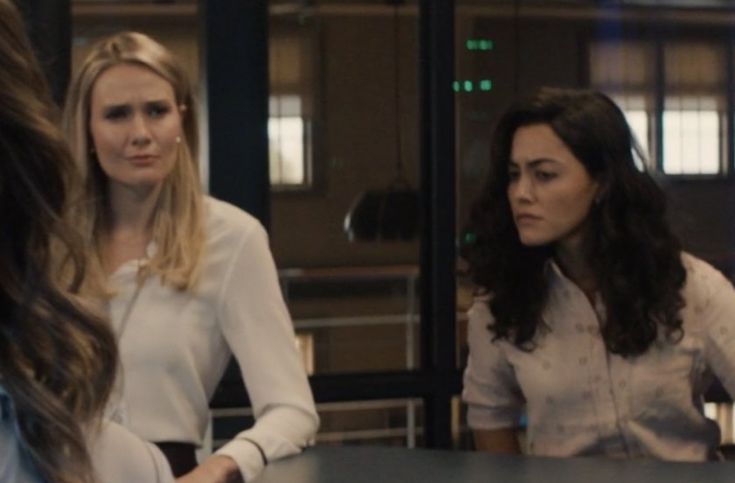
The beloved island spin-off NCIS: Hawaiʻi has officially locked in December 4, 2023 as the date when cameras roll on Season 3. The announcement fuels excitement, speculation, and hope for what’s to come on the sun-kissed shores of Oʻahu.
In this article, we’ll dig into all the juicy details: how the schedule fits into TV calendars, what delays impacted it, what production on the ground looks like, and what fans can expect when Season 3 finally drops.
Production Timeline & Start Date
After months of planning and anticipation, NCIS: Hawaiʻi production will kick off Monday, December 4, 2023 — roughly 10 weeks before the planned season premiere. This early start gives cast, crew, and post-production teams breathing room for a polished launch.
The decision is deliberate: with a tight television schedule and high expectations surrounding the NCIS brand, getting a jump on filming ensures fewer last-minute scrambling as air date approaches.
Why December 4? Strategic Timing
Why start so early? Here are a few reasons:
-
Buffer time for post-production — Editing, sound mixing, visual effects, and fine-tuning require ample lead time.
-
Holiday lull — The early December period is often quieter for TV productions, minimizing conflicts with big studio projects.
-
Shooting in mild weather — Hawaiʻi’s December weather tends to be more stable before the peak storm season kicks in.
-
Network scheduling — It allows CBS to align its promos, marketing, and press to build hype ahead of the February 2024 premiere.
That said, starting before year-end means working through holidays, which can challenge scheduling, crew availability, and logistics.
The Impact of Strikes & Delays
WGA & SAG-AFTRA Disruptions
The 2023 Writers Guild of America and SAG-AFTRA strikes upended many TV production timelines, and NCIS: Hawaiʻi was not immune. The strikes forced many shows to delay writing, revisions, casting, and pre-production.
Because of this, the script drafts, location scouting, and crew hires had to be pushed later than initially expected. That’s likely one factor in why the show is giving itself extra time ahead of filming.
How the Network Handled the Delay
CBS and the creative team seemed to adapt by:
-
Compressing prep schedules where possible.
-
Prioritizing scripts and episodes that could be filmed earlier.
-
Front-loading resources to avoid last-minute chaos.
Despite the delays, they locked in the December 4 start — a sign they’re confident in the production pipeline.
What Happens on Day One of Filming
Traditional Hawaiian Blessing Ceremony
When filming begins on location, Hawaiʻi-based productions often start with a blessing ceremony — a gesture of respect for the land, local culture, and safety. It’s more than a ritual; it’s a symbolic bridge between Hollywood and the island’s traditions.
The cast, crew, local elders, and production leaders usually gather before cameras roll. The blessing sets the tone: safety, respect, collaboration, and cultural mindfulness.
First Scenes & Location Setup
After the blessing, the production typically moves to:
-
Location setups — lighting, camera blocking, sound, and grip equipment deployed.
-
First element shots — establishing shots of Hawaiʻi landscapes or exterior scenes to get the “footprint” in place.
-
Test runs, rehearsals & coverage — covering multiple angles, test lighting passes.
If all goes well, by day one wrap, they’ll have reliable daily rhythms, which is critical for the intense shooting schedule ahead.
Cast & Crew – Who’s Back, Who’s New
From published sources, the following cast and crew are confirmed or expected:
-
Vanessa Lachey returns as Special Agent Jane Tennant
-
Alex Tarrant, Noah Mills, Yasmine Al-Bustami, Jason Antoon, and Tori Anderson are confirmed cast members
-
LL Cool J is set to reprise his role as Sam Hanna in a recurring capacity for th
-
The writing and executive team continues under Matt Bosack, Jan Nash, Christopher Silber, and director Larry Teng
-
New directors may join (e.g. Daniela Ruah directing an episode)
Crew-wise, local production offices will hire camera, grip, lighting, sound, set design, and many local subcontractors. The Hawaiian film industry typically sees 67% of the production budget spent in local business sectors.
On-the-Ground Production in Oʻahu
Locations, Permits & Local Economy
Filming will likely leverage iconic Hawaiʻi locations — lush coastlines, jungle terrain, marine bases, and scenic backdrops. To film these, producers must secure permits through local authorities, manage traffic, and coordinate logistical support.
Given past productions, a large share of expenditures benefit local businesses — hotels, catering, transport, equipment rental, and more. The Honolulu Film Office has emphasized that high-end productions like this are vital for economic diversification.
Crew, Extras & Local Talent
A significant portion of crew and background actors will be sourced locally. This not only reduces travel and lodging costs but also fosters local employment. In a typical TV shoot in Hawaiʻi, hundreds of local vendors and extras are hired over months of filming.
Producers often partner with local casting agencies and unions to staff needed positions — from production assistants to specialty roles. Collaboration with local Hawaiian cultural consultants ensures authenticity and respect in representing island life.
Milestones, Challenges & Risks
Weather, Tropical Storms & Logistics
One major wildcard: tropical weather. Hawaiʻi is subject to rain, wind, shifting light, and occasional storms. Delays due to weather are real risks, especially for wet-soundstage, exterior shoots, or drone work.
To mitigate:
-
Build buffer days in the schedule.
-
Use alternate indoor sets.
-
Monitor forecasts closely.
-
Schedule “weather gag” scenes last.
Logistical challenges will include transporting gear across island roads, scheduling around landmarks, and managing remote sets.
Budget Concerns & Cost of Filming in Hawaiʻi
Filming in an island environment is expensive — shipping gear, lodging, per diems, fuel, permit fees, and environmental safeguards all add up. Critics have argued the high cost is one reason NCIS: Hawaiʻi was canceled after Season 3.
Balancing artistic ambition with budget discipline will be key. Producers must plan with precision and contingencies.
Release Timeline & Premiere Strategy
With filming starting December 4, the objective is to land the Season 3 premiere on February 12, 2024. That gives the post-production team about ten weeks — a tight window but manageable with a disciplined pipeline.
Promotional activities will likely ramp up in January: teaser trailers, press releases, cast interviews, and social media campaigns. The late start to filming allows for capturing behind-the-scenes content to light up fan interest.
Since the series finale also became the show’s final episode (cancellation announced April 26, 2024), every moment of Season 3 must count.

Why This Matters to Fans & TV Strategists
-
For Fans: Knowing the filming start anchors expectations. It offers hope that the show is fully committed to delivering a strong Season 3.
-
For Industry Insiders: The timing reveals how networks are managing tight windows and strike recovery. It’s a case study in resilient production planning.
-
For Hawaiʻi & Local Economy: Each production injects money into the local film ecosystem, supporting jobs and infrastructure.
Although the show was ultimately canceled after Season 3, the decision to begin strong with early filming underscores how seriously CBS and the producers approached the season.
Conclusion
NCIS: Hawaiʻi’s declaration that filming for Season 3 would begin on December 4, 2023 was more than a scheduling tidbit — it’s a clear signal that the show aimed to deliver at full strength despite industry headwinds. The decision to frontload production, offset delays from the strikes, align with promotional timelines, and ground the series in local Hawaiian culture all reflect a thoughtful approach to television production.
With cast, crew, and fans ready to dive back in, the December kickoff sets the stage for what promised to be an electrifying final season. Even as the show’s cancellation later made that journey bittersweet, the craftsmanship and ambition behind that filming start remain a compelling piece of behind-the-scenes narrative.
